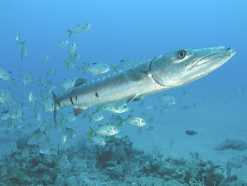- Escambia County Public Schools
- Biology End of Course Review
- SC.912.L.17.5 Population Size
Science
Page Navigation
- Home
- Elementary Science Curriculum
-
Biology End of Course Review
- Biology EOC Review
- SC.912.N.1.1 Scientific Method
- SC.912.L.18.12 Properties of Water
- SC.912.l.18.9 Photosynthesis and Cellular Respiration
- SC.912.L.18.1 Macromolecules
- SC.912.L.16.17 Mitosis and Meiosis
- SC.912.L.16.3 DNA Replication
- SC.912.L.14.3 Cell Structure
- SC.912.L.14.1 Cell Theory
- SC.912.L.17.20 Human Impact
- SC.912.L.17.9 Food Webs and Energy Transfer
- SC.912.L.17.5 Population Size
- SC.912.L.16.13 Reproductive System
- SC.912.L.16.10 Biotechnology
- SC.912.L.14.52 Immune System
- SC.912.L.14.36 Cardiovascular System
- SC.912.L.14.26 The Brain
- SC.912.L.14.7 Plant Structure
- SC.912.L.16.1 Genetics
- SC.912.L.15.13 Natural Selection
- SC.912.L.15.8 Origin of Life
- SC.912.l.15.6 Classification
- SC.912.L.15.1 Evolution
SC.912.L.17.5 Population Size
ORGANISMS, POPULATIONS AND ECOSYSTEMS
CLASSIFICATION, HEREDITY AND EVOLUTION
WHAT YOU NEED TO KNOW...
-
- You need to know how population size is determined by births, deaths, immigration, emigration and limiting factors.
- You need to be able to use data about population dynamics, abiotic factors, and biotic factors to explain a change in carrying capacity and population size in an ecosystem.
- You need to know that different types of organisms exist within aquatic systems due to chemistry, geography, light, depth, salinity, and/or temperature.
- You need to know the potential changes in an ecosystem resulting from seasonal variations, climate changes and/or succession.
- You need to know the positive or negative consequences that result from a reduction in biodiversity.
EXAMPLE ONE
-
Mullet are local estuarine fish that move in schools and feed on plankton and plant matter. Natural predators of the mullet include spotted sea trout, sharks, pelicans and dolphins. The graph below shows how the number of mullet in an area has changed over time.
Based on the data, one student concludes that a new predator was introduced into the area during this time period. Which of the following is a likely alternate explanation for the change in the mullet population?
A. mullet prey increased in the area
B. mullet parasites decreased in the area
C. the temperature of the area increased
D. the amount of aquatic plants in the area decreased
EXAMPLE TWO
-
How does the predator-prey relationship affect a population?
A. The predators and prey are in competition with each other.
B. Usually either the predator or the prey will become extinct.
C. The predator species usually has exponential growth.
D. The relationship controls the population size of both species.
EXAMPLE THREE
-
Data on the immigration and emigration of a fish species would be most helpful in determining which of the following?
A. biological magnification
B. interspecies competition
C. population of the species
D. predator-prey relationships
EXAMPLE FOUR
-
When an environment has reached its carrying capacity for a certain population, which of the following is true?
A. Growth and immigration rate is equal to death and emigration rate.
B. Growth and immigration rate is greater than death and emigration rate.
C. Growth and immigration rate is less than death and emigration rate.
D. Growth rate is exponential.
EXAMPLE FIVE
-
The pH of the water in several lakes in Norway and Sweden had decreased to below 5.0 due to an increase in acid rain. Which of the following is most likely to happen in these lakes?
A. the decline of several fish populations.
B. an increase in numbers of fish
C. an increase in the amount of primary producers
D. increased predator-prey relationships
EXAMPLE SIX
-
Which of the following is a limiting factor in a population of organisms.
A. reproductive replacement
B. life spans of the members
C. fluctuations in atmospheric temperature
D. availability of food
EXAMPLE SEVEN
-
Which of the following are abiotic factors that shape ecosystems?
A. worms, plants and temperature
B. wind, precipitation, and soil type
C. niches, trees, and bacteria
D. sunlight, mushrooms, and wind
EXAMPLE EIGHT
-
The common brushtail possum is a marsupial native to Australia. This possum was introduced to New Zealand where it had no natural predators and had an abundant food supply. Which of these likely occurred a few years after the introduction of this possum to New Zealand?
A. The possums became extinct.
B. The possums developed shorter life spans.
C. The possum population grew to a larger size.
D. The possum population evolved into a different species.
EXAMPLE NINE
-
The number of pythons found throughout Everglades National Park has increased in recent years. These huge snakes are not native to Florida and are believed to have been released into the wild by pet owners. Wildlife biologists have initiated attempts to capture and remove these pythons. Which statement best explains the biologists' reasons for removing these pythons from the Everglades?
A. The pythons could upset the territorial boundaries of native organisms.
B. The pythons could adapt to overcome diseases common to native snakes.
C. The pythons could prey on native organisms and cause native population to decline.
D. The pythons could begin to interbreed with native snakes and produce a more successful species.
EXAMPLE TEN
-
Why are there so few aquatic plants and phytoplankton that live at the bottom zones in the ocean?
A. The ocean floor contains many decomposers.
B. Most sunlight is absorbed before reaching these levels.
C. Water is a limiting factor.
D. The temperature in these zones is extremely low.
POPULATION ECOLOGY
COMMUNITY ECOLOGY
ECOLOGICAL SUCCESSION
LIONFISH INVASIVE SPECIES
HUMAN IMPACT
EFFECT OF CLIMATE CHANGE ON SPECIES
IN YOUR BOOK
-
General Biology - Sections 14.3-14.5, pgs. 436-447
Honors Biology - Sections 5.1 and 5.2, pgs. 108-116




